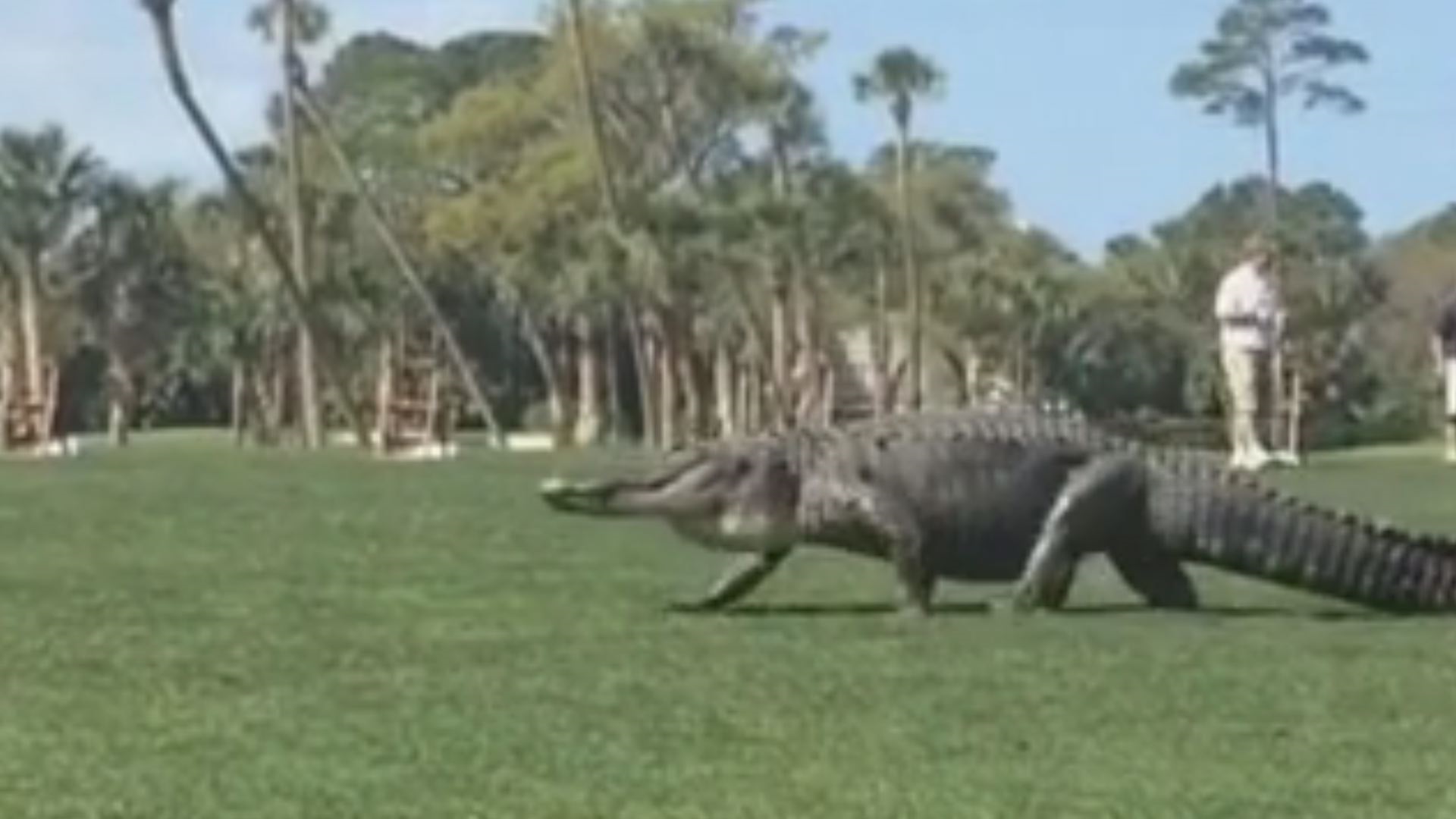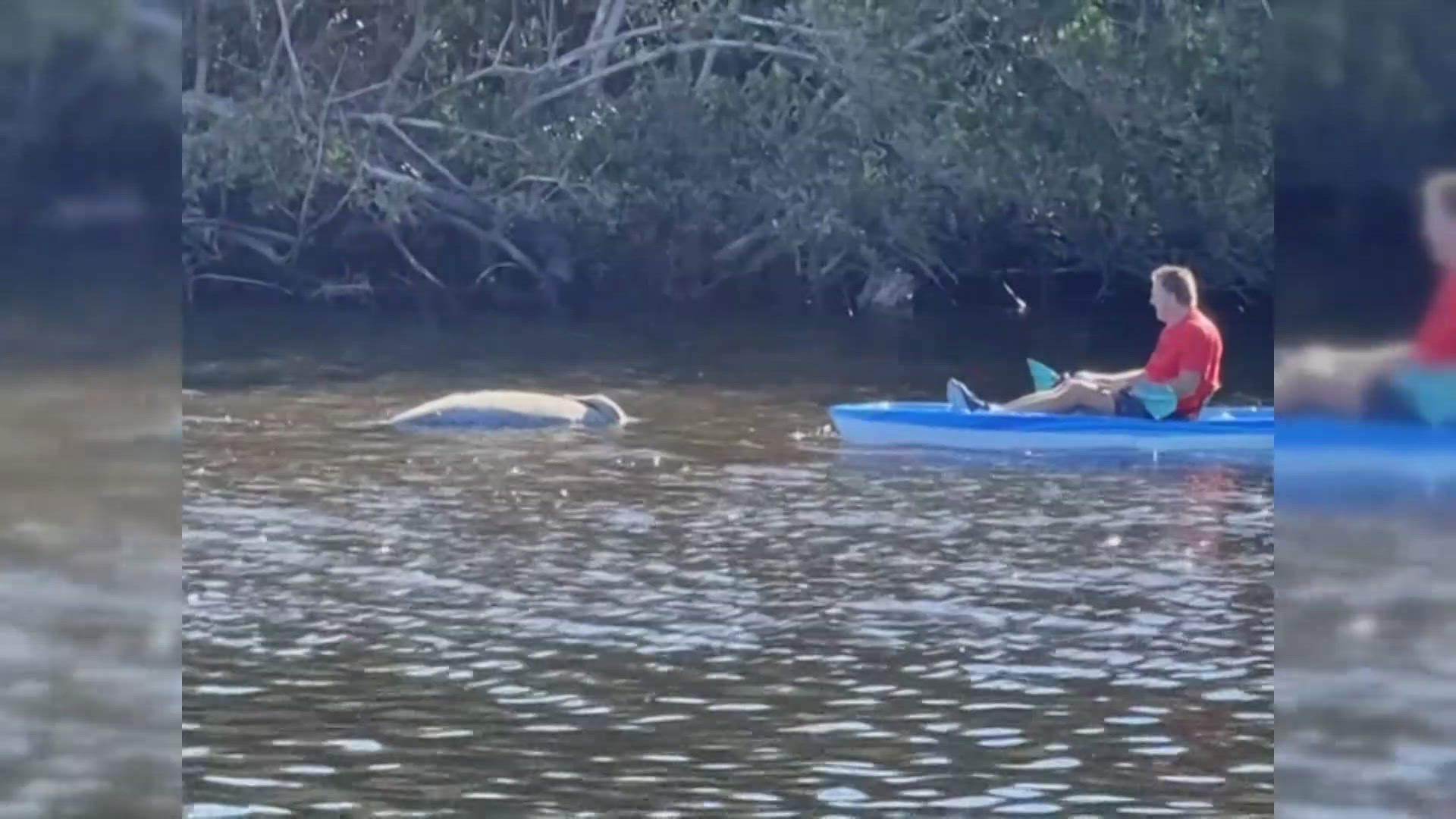FORT MYERS, Fla. -- Alligators make news often, and for good reason.
These prehistoric lizard-like leviathans march calmly through golf course fairways, across college campuses and end up in urban drainage systems and even neighborhood swimming pools.
Areas like Orlando, Sarasota, Fort Myers and Naples rank among the highest when it comes to alligator removals, according to data from the Florida Fish and Wildlife Conservation Commission, the state agency that handles alligator nuisance calls.
State contractors captured and removed alligators in more than 6,500 locations in Florida in 2016, resulting in 8,050 captured animals, most of them killed.
Nuisance alligator removals have averaged 7,726 a year between 2001 and 2015. The range is from 5,833 in 2002 to a high of 11,664 in 2006. Alligators are removed when classified as a "nuisance" — longer than four feet and posing a threat to people, pets or property, according to the Florida Fish and Wildlife Conservation Commission.
"Alligators become more active during spring when temperatures rise," said Tammy Sapp, with the Fish and Wildlife Commission. "By taking simple precautionary measures when recreating near the water, people can reduce the chances of conflicts with alligators."
Florida's alligator population is about 1.3 million, and alligators live in all 67 counties in the state.
"Alligator incidents are a rare occurrence in Florida," Sapp said. But when they occur, tragedy often follows. As of September 2016, the most recent statistics available, there were seven major alligator bites of humans and one was fatal.
One of the most high-profile recent fatalities involved 2-year-old Lane Graves of Nebraska. In 2016 the toddler and his family were visiting Disney World. While playing by the shore of the Seven Seas Lagoon, the boy was grabbed by the head, pulled into the water and drowned. Fish and Wildlife removed and killed six alligators from the lagoon during the search for the child.
In 2015, the Fish and Wildlife Commission reported nine bites with one fatality. The worst year in FWC's 37-year records was 2001, when there were 16 reported alligator bites with three of them fatal. Some alligator bites are accidental. The FWC's brochure, "A guide to living with alligators", advises all victims of a bite to seek medical attention. Alligator bites can cause serious and sometimes fatal infections.
Most years, no one in Florida dies from an alligator bite. Yet gators can become a real nuisance when people feed them.
Mike Reynolds, a state-contracted trapper, said it's obvious when a gator has been fed. They don't fear humans and will even approach them.
He told the story of one woman who complained that her neighbors had been feeding the alligator who lived in a pond behind her home. How did she know? When she threw rocks at the gator, he jumped up and caught them.
Some nuisance animals, like black bears, can be captured and relocated. Alligators are killed.
"Relocating nuisance alligators is not a responsible option for people or alligators," Sapp said. "Relocated alligators often try to return to their capture site and can create problems for people or other alligators along the way."
So what happens to the alligator carcasses?
"When a contracted nuisance alligator trapper removes an alligator, it becomes the property of the trapper," Sapp explained. "In most cases, the alligator is processed for its hide and meat, which is the primary source of compensation for their services. Occasionally, a nuisance alligator is sold alive to an alligator farm, animal exhibit or zoo."
Locations with the most removals:
Orlando: 232
Sarasota: 176
Tampa: 172
Kissimmee: 164
Fort Myers: 152
Naples: 135
Lakeland: 123
Bradenton: 116
West Palm Beach: 104
Jacksonville: 101
Source: Florida Fish and Wildlife Conservation Commission


